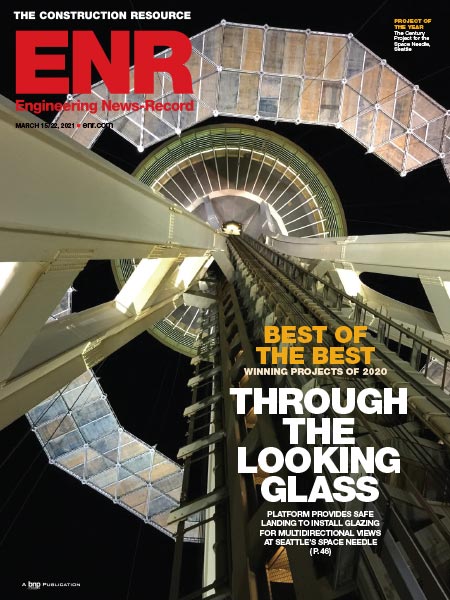Choosing Your Battles
There often is a disconnect between the problems researchers tackle and those that society most urgently needs to solve.
Researchers seek out interesting problems to work on, and the nature of research is such that it is easy for them to be lured into problems that call for complex, mathematical solutions that, while interesting, may have little actual benefit to the world.
Three years ago while I was looking to find interesting and socially important problems to address through my own research in civil engineering, I came upon a report published in 2008 by the National Academy of Engineering on the engineering grand challenges for the 21st century. The report was useful and inspirational, but little of its content related specifically to challenges facing civil engineers.
It occurred to me that the civil engineering community could be inspired by the report, but it could go further and create its own scientifically-grounded version that would focus on defining civil engineering problems whose resolution would have the greatest impact on people everywhere.
So, in my role as chair of the Data Sensing and Analysis Committee of the American Society of Civil Engineers’ Technical Council on Computing and Information Technology, I worked with other committee members to secure a grant from ASCE to hire researchers and collect the data needed to define the great challenges facing our profession. We formed a task force that assessed the impact of those challenges on society and the benefits that resolving them could bring, and it suggested the type of research needed to address them.
After several revisions and round trips for expert evaluation, the report now is available to the public through the ASCE’s website (link here).
The challenges identified are very complex and will require integrated approaches to solve them. One very important and improving instrument for addressing them that we have now is in the area of data sensing and analysis. DSA research focuses on:
-- data sensing
-- pre-processing
-- analysis and fusion
-- intelligent searching and information retrieval
-- parallel and distributed computing
-- knowledge management and discovery
For example, with the first of the nine great challenges we identified, estimating sea level, the report notes that with current threats of climate change, more rigorous monitoring is needed. Sea level is expected to rise to dangerous levels because of global warming. Many coastal cities and small island states are at risk of drowning if temperatures continue to rise. Knowledge about extreme sea level rise is important for predicting flooding risks, coastal management, vessels safety and navigation.
DSA can potentially be used to compute the gravitational effects to better predict tides, analyze the temporal and spatial variations of wave dynamics, and integrate, analyze and apply data and information from multiple sources.
With each of the nine challenges identified there is a clear role for research to play. We wanted to help researchers understand what the big problems are, and help them see where they should be focusing their efforts, instead of doing things with very little impact.
These are the challenges we identified:
1. Estimate Sea Level: A method to estimate the sea level is of great significance to improve the coastal resilience in response to natural hazards. It can be used to protect ship navigation, coastal cities and island states from this impact of global warming.
2. Enhance Disaster Management through Infrastructure Resilience: Large-scale natural disasters result in severe property damage and financial losses. Critical infrastructure systems, in particular, play a very important role in sustaining industries and communities, during disaster recovery.
3. Reduce Soil Erosion: Soil degradation is very serious, especially in the middle and western parts of the country. It is estimated that soil erosion costs about $44 billion a year in damage to farmland, waterways, infrastructure, and health.
4. Improve Building Energy Efficiency: Buildings consume more than one third of the primary energy. This figure reached 38.9% in 2006 and is expected to reach 42.4% by 2030. In terms of dollars, building energy expenditures reached a total of $392.2 billion in 2006.
5. Manage Groundwater: Water consumption in the U.S. is 410 billion gallons per day, 20% of which was supplied from the groundwater. In the high plains of the U.S., the groundwater level has been declining during the past 30 years. The increasing contamination of groundwater is also threatening human health.
6. Monitor the Health of Infrastructure: The US infrastructure has aged significantly, and needs $2.2 trillion over the next 5 years to restore it. 26% of the country’s bridges are structurally unsafe and functionally obsolete.
7. Reduce Traffic Congestion: The average daily percentage of miles traveled by vehicles under congested conditions increased from 24.9% in 1995 to 28.7% in 2005. Traffic congestion has cost the U.S. economy an estimated $200 billion per year. The demand on highway travel keeps increasing.
8. Improve Construction Productivity: The construction industry contributed $501 billion to the national GDP in 2010, and reached a peak in 2007 of $657 billion. Construction productivity has lagged behind manufacturing productivity. Improving it can directly enhance the robustness of the national economy.
9. Enhance Construction Safety: Just in 2009, construction related accidents accounted for 816 deaths; a number that constitutes 19% of the total work related deaths across all industries.
These challenges are not challenges facing isolated locales, but are challenges facing the entire world. Civil engineers can identify solutions to them, and through creativity and the application of the tools of data sensing and analysis, help achieve a sustainable world, raise the global quality of life and contribute to a more sustainable, safe, and healthy world.
These are grand challenges, indeed.




